1 The Ruins of St. Paul's
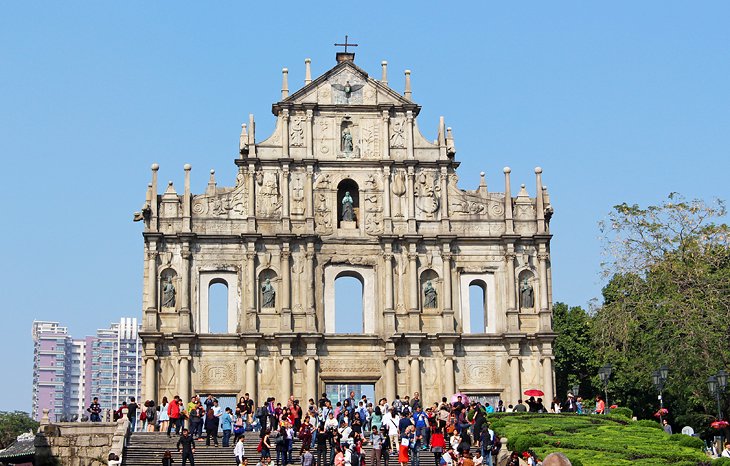
The Ruins of St. Paul's
All that remains of St. Paul's Cathedral, once considered the finest Christian building in the Far East, is its imposing Renaissance façade, a Macau landmark standing at the top of a broad flight of granite steps. After the destruction of the first church by fire in 1601, a new one was completed in 1637, modeled on the church of the Gesù in Romeand constructed by Christians driven out of Japan. The church was destroyed by a typhoon and fire in 1835, but its remaining façade still displays a little of the cathedral's former glory. Notable features include an inscription above the doorway dedicating the church to the Mother of God; figures of Jesuit saints; and a profusion of relief ornaments, ranging from a figure of the Virgin Mary to dragons, skeletons, and a variety of motifs, both European and Asian. Also of interest are reliefs of biblical scenes including the Fall and the Crucifixion. Another Christian site worth visiting is the Igreja da Sé - the Church of the Nativity of Our Lady - a lovely basilica-style cathedral built in 1850 and reconstructed in 1938. Highlights include a shrine above the chapel holding the relics of Japanese martyrs who died during the persecution of Christians in the early 17th century.
2 The Senate and Senado Square
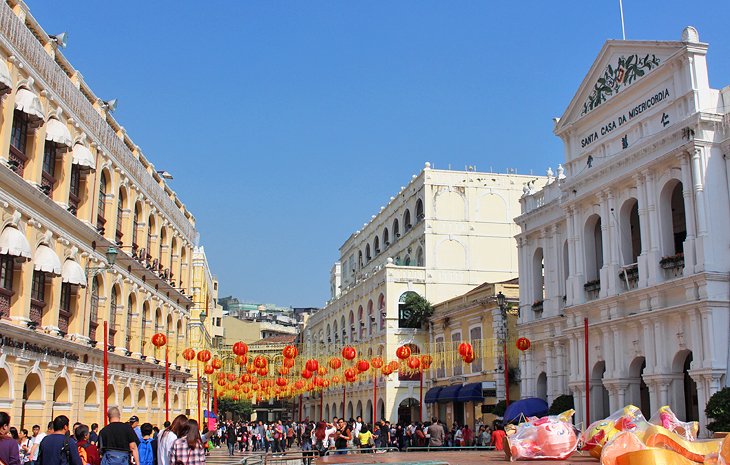
The Senate and Senado Square
In the historic heart of Macau, Senado Square (Senate Square) is a delightful pedestrian area. Highlights include the impressive old Senate building now occupied by the Municipal Council and widely regarded as the finest example of Portuguese colonial architecture in Macau. Built in 1784, the building's exquisite façade was added in 1870, and the whole building was completely restored in 1940. Interior highlights (available as part of formal guided tours) are the Council Chamber with its rich wood paneling and the Senate Library with its more than 50,000 rare manuscripts, some more than 500 years old, as well as reproductions of carvings seen in the famous Biblioteca Joanina library in Coimbra, Portugal. The square is also a great spot for shopping, as well as dining in restaurants featuring both European and Chinese cuisine, and is also home to a number of other tourist attractions including the 17th-century Spanish Domingo's Church.
3 A-Ma Temple
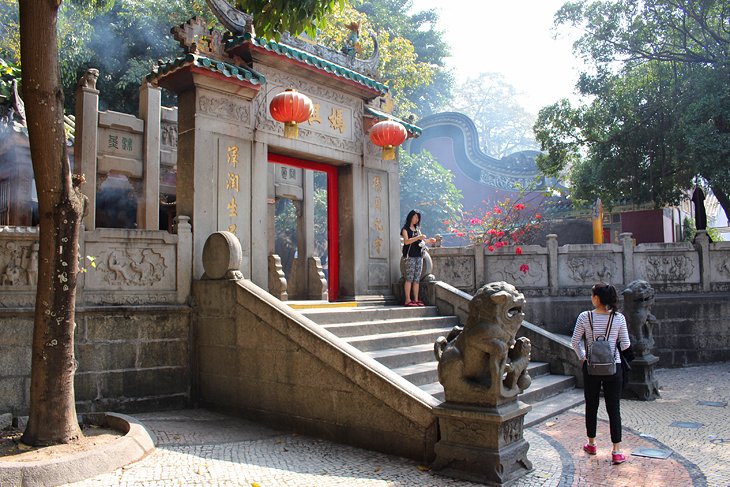
A-Ma Temple
Dedicated to the goddess Matsu, the splendid A-Ma Temple (Templo de A-Má) was built on the Macau Peninsula in 1488 and was the inspiration for the renaming of the city by the Portuguese a few decades later. Part of Macau's UNESCO Historic Center, this Buddhist temple is one of the city's most important religious sites and is well worth exploring. Divided into six easily accessible sections - the Gate Pavilion, Prayer Hall, Memorial Arch, Hall of Benevolence, the Zhengjiao Chanlin, and the Hall of Guanyin - this architecturally pleasing attraction features numerous interesting things to see, from its many fierce-looking stone lions and statues of the goddess Matsu to shady spots to stop and contemplate the serenity of the temple grounds, as well as spectacular views over the bay.
4 Fortaleza do Monte: Home of the Macau Museum
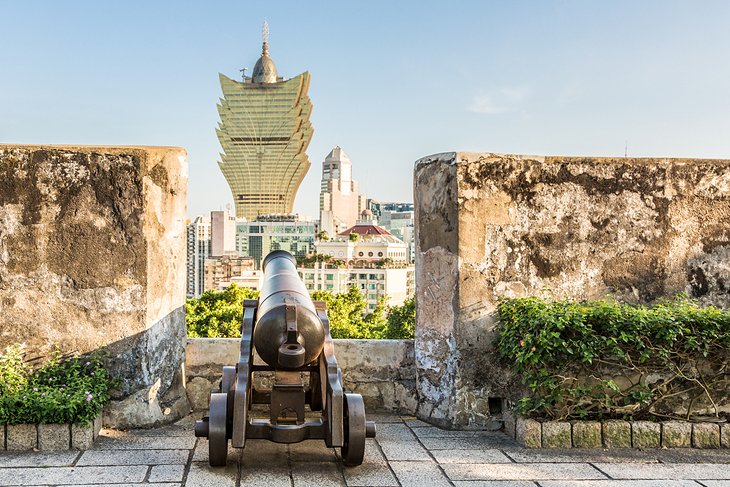
Fortaleza do Monte: Home of the Macau Museum
Built in 1626, Fortaleza do Monte was for many years the hub of Portugal's military presence in this part of China, eventually serving as the governor's residence, a role it performed until 1749. Today, this former fortress houses the three-story Macau Museum, dedicated to the archaeology and anthropology of Macau with an emphasis on how the Chinese, Portuguese, and Macanese have come to live and work together (English language guided tours are available). Also worth visiting is the Mount Fortress Garden, a welcome respite with its pleasant moat-like pond and flower beds, and the Moorish-style Mansão Evocativa de Sun Yat-Sen, a mansion built in memory of Sun Yat-sen, founder of the first Chinese Republic. Highlights include displays about his life along with interesting photographs of Chiang Kai-shek. Another related site is Sun Yat Sen Park (one of 43 worldwide that bear his name) with its beautiful gardens, a Victorian greenhouse, and an aviary.
Address: 112 Praceta do Museu de Macau, Macau
Official site: http://www.macaumuseum.gov.mo/w3ENG/default.aspx
5 Macau Tower
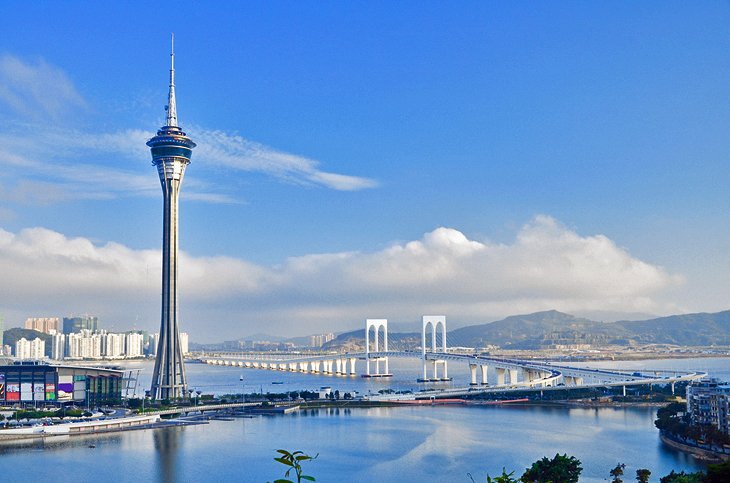
Macau Tower
Part of the massive Macau Tower Convention and Entertainment Centre, the Macau Tower is easily one of the city's most recognizable landmarks as well as one of its most popular tourist attractions. Standing 338 meters tall and built for telecommunications and broadcasting, the tower's fun side includes an observation deck boasting phenomenal views over the city, as well as a number of restaurants, theaters, and shopping opportunities. For thrill seekers, there's Skywalk X, a breathtaking walk along the outer rim of the observation level, and the world's highest bungee jump at the 233-meter mark. Another fun modern attraction to include on your itinerary is the Grand Prix Museum with its collection of racing related memorabilia and vehicles.
6 Coloane Island and Hac Sa Beach
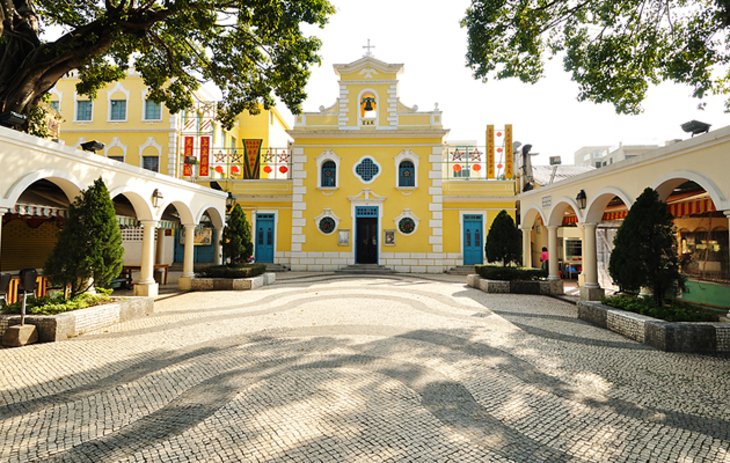
Coloane Island and Hac Sa Beach
Joined to the mainland by bridge and causeway, the island of Coloane lies to the south of the Macau Peninsula, beyond the island of Taipa, and should be included in your Macau itinerary. Visitors are often pleasantly surprised to learn Coloane is an island of pine forests, eucalyptus groves, tropical vegetation, and farmland, as well as boasting a number of beautiful beaches of fine white sand. Of these, the best known (and busiest) is Hac Sa Beach on the east side of the island. Part of Coloane Park with its Chinese pavilions and tropical flora, the beach area includes a recreation complex with facilities for swimming, tennis, mini-golf, and other fun amusements. Another beach of note is Cheoc Van Beach at the south end of the island. Also of interest is the Tam Chin Temple, noted for its whalebone model of a ship with a wooden dragon's head, and Coloane Village, a mix of old Chinese and colonial buildings with a charming little chapel dedicated to St. Francis Xavier, in front of which is a monument commemorating a successful Portuguese action against pirates in 1910.
7 The Maritime Museum and Fisherman's Wharf
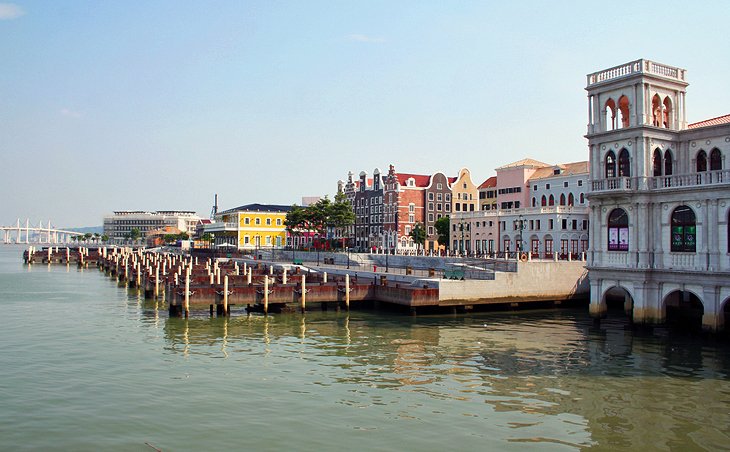
The Maritime Museum and Fisherman's Wharf
Occupying a modern building opposite the A-Ma Temple, the excellent Maritime Museum (Museu Marítimo de Macau) hosts numerous displays, including a comprehensive collection of material on Macau's maritime history, model ships, and fishing equipment. Also of interest are exhibits illustrating the development of nautical and meteorological instruments, including a number of dioramas portraying important events in the city's seafaring past. In front of the museum is the Inner Harbour (Porto Interior) through which runs the frontier between Macau and China, where you'll see a restored Chinese dragon boat, a sampan, a flower boat, and a fishing smack used by people fleeing from Vietnam. (Hot Tip: Check the museum's website for details of fun dragon boat cruises around Macau, or better still, try to plan your visit to coincide with the dragon boat races in May, when these impressive craft, with 20 oarsmen apiece, are spurred on by a drummer sitting in the stern.) Also worth a visit is the nearby Macau Fisherman's Wharf (Doca dos Pescadores), a fun theme park encompassing numerous shops, restaurants, and rides built to resemble such famous coastal cities as Amsterdam and Venice.
Address: 1 Largo do Pagode da Barra, Macau
Official site: www.museumaritimo.gov.mo/index_e.html
8 Portas do Cerco (Border Gate)
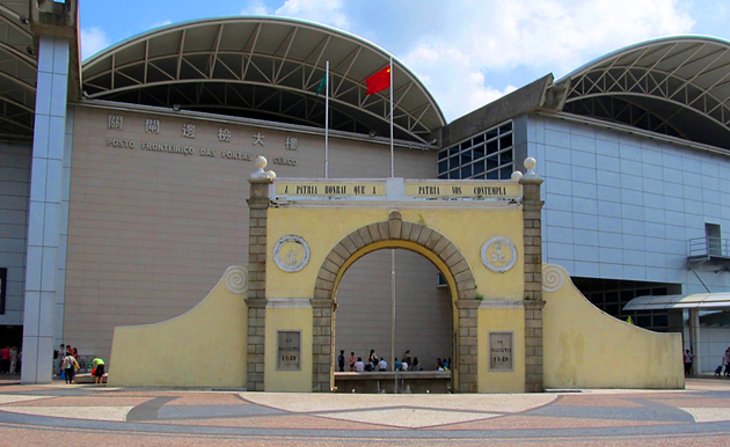
Portas do Cerco (Border Gate)
Built by the Portuguese in 1870 to replace an earlier Chinese gate, Portas do Cerco (the Border Gate) is one of the city's most visited landmarks and once served as the only way in and out of Macau from China. On the Macau side are inscriptions of military significance and quotations, including the well-known phrase, "Honor your country: it cares for you." Since being completely redeveloped in 1994, the area has become a popular tourist destination, much of it pedestrianized and home to interesting artworks. These include large murals by indigenous artists built using individual porcelain tiles in the azulejo technique so popular in Portugal and depicting scenes from the history of Macau and the surrounding area.
9 Taipa Island and Taipa House
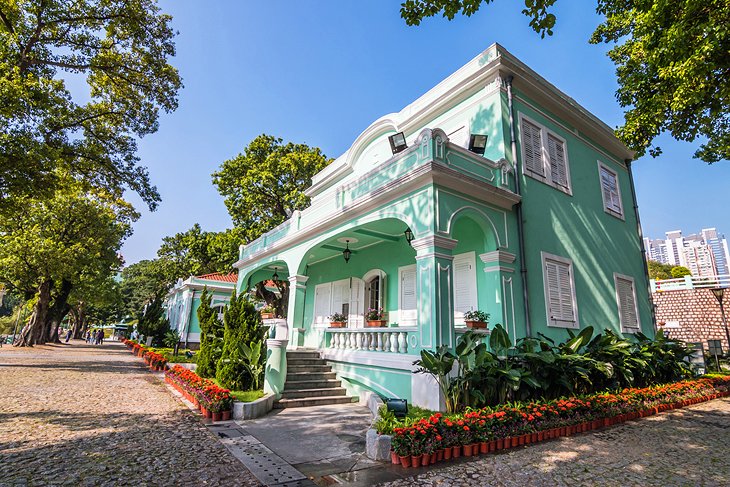
Taipa Island and Taipa House
The island of Taipa, to the south of Macau and linked to it by an imposing high-arched bridge, makes for a fun outing. Formerly a Chinese customs post for vessels putting in at Macau and for decades the traditional site of fireworks factories, the town itself contains large numbers of Chinese shops and Portuguese colonial buildings, along with a popular horse-racing track. Other highlights include the Buddhist Shrine of the Four Faces and Pak Tai Temple, built in 1844 and notable for its rich decoration and its two life-size guardian figures. Of the island's many smaller temples, Tin Hau is the best known and was built some 180 years ago (it's notable for its highly ornamented shrine containing a figure of the goddess). Finally, a must-see is the fully restored colonial Taipa House, home to the Taipa House Museum with its interesting displays of furniture and furnishings typical of old Macau homes.
MAP
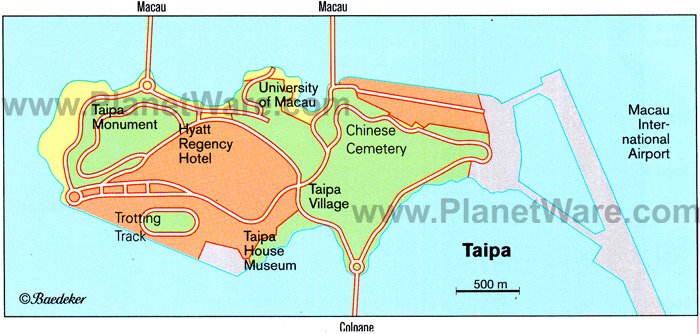 Taipa Map
Taipa Map10 Kun Iam: The Temple of the Goddess of Mercy
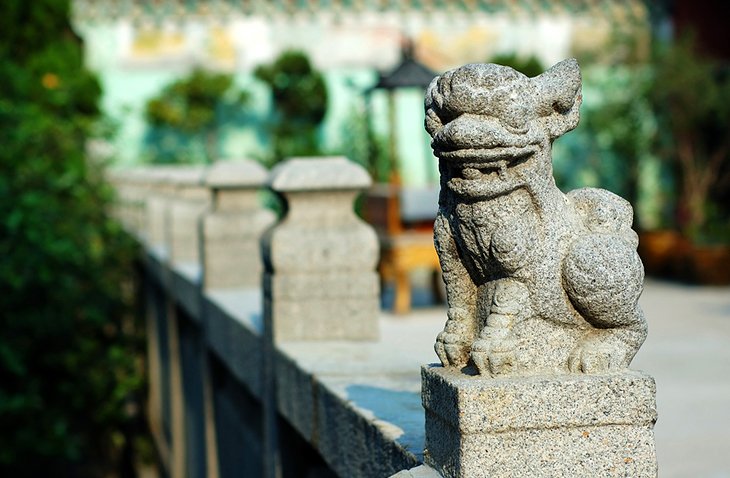
Kun Iam: The Temple of the Goddess of Mercy
Dedicated to the goddess of mercy, the current Kun Iam Temple was built in 1627, although references to a temple on the site can be traced back to the Yuan dynasty of the 13th and 14th centuries. In the entrance hall are three figures of Buddha representing the Past, Present, and Future, while another hall contains a figure of the goddess of mercy flanked on either side by nine Buddhas. Also of note is the temple's beautiful courtyard garden where on July 3rd, 1844, the first ever treaty between the US and China was signed. Other notable features include porcelain reliefs and roof turrets with figures dating from the Ming period, and a unique gilded Buddha statue said to resemble famed Venetian, Marco Polo. Behind the temple is a large Chinese garden with its Tree of the Loving Couples at which young lovers offer prayers for good fortune in their future lives. Also worth a visit is Lin Fong Miu Temple, a Taoist site built in 1592 that long served as a staging point for travelers to China.

No comments:
Post a Comment